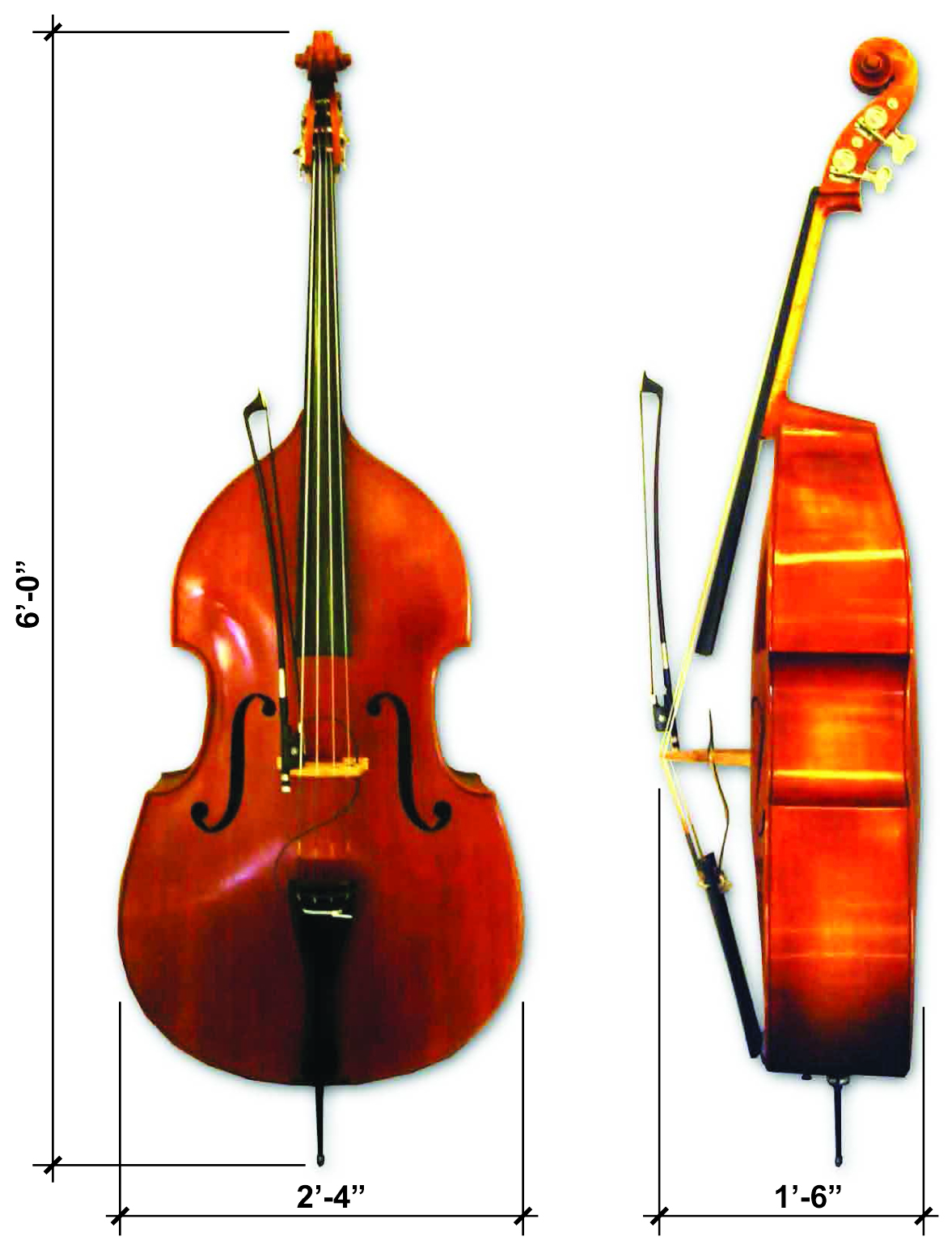The double bass is not only a vital instrument in orchestras and jazz ensembles but also comes in various sizes that cater to different players and musical contexts. Whether you're a budding bassist looking to choose the right size or a seasoned player interested in the nuances of this magnificent instrument, understanding double bass sizes is essential. Each size comes with its own unique sound characteristics and playability, which can significantly influence your performance experience. By delving into the world of double bass sizes, you can make an informed decision that enhances your musical journey.
In this guide, we will explore the different sizes of double basses available in the market, their specifications, and how to choose the right one for your needs. We'll also answer some frequently asked questions about double bass sizes, offering insights that could be valuable to both beginners and advanced players alike. Understanding the different dimensions and how they affect sound production can set you on the path to mastering the double bass, no matter your skill level.
As we embark on this exploration of double bass sizes, it's essential to remember that the right choice goes beyond just dimensions. It is about finding the perfect fit for your body size, playing style, and musical preferences. So, let’s dive deeper into the subject and uncover everything you need to know about double bass sizes!
What Are the Common Double Bass Sizes?
When it comes to double bass sizes, there are several common options that players can choose from. The most prevalent sizes include:
- 1/8 Size
- 1/4 Size
- 1/2 Size
- 3/4 Size
- 4/4 Size (Full Size)
How Do Different Sizes Affect Sound and Playability?
The sound and playability of a double bass can vary significantly based on its size. Generally, larger basses produce a deeper, richer sound, while smaller basses tend to be brighter and easier to handle for those with smaller frames. Here’s a breakdown of how size influences sound and playability:
- 1/8 Size: Ideal for very young beginners, this size is lightweight and easy to maneuver.
- 1/4 Size: Slightly larger, this size is suitable for older children and smaller adults.
- 1/2 Size: Often used by teenagers, this bass strikes a balance between size and sound quality.
- 3/4 Size: The most common size among adult players, offering a full sound without being too cumbersome.
- 4/4 Size: The full-sized bass, favored by professional musicians for its robust sound.
Who Should Play a Smaller Double Bass Size?
Smaller double bass sizes are generally suitable for younger players or those with shorter arms and smaller hands. These instruments allow for comfortable playing and are often recommended for students who are just beginning their musical journey. Choosing the right size can make a significant difference in the learning process, as it can prevent strain and promote better technique from the start.
What Should You Consider When Choosing a Double Bass Size?
When selecting the right double bass size, several factors should be taken into account:
- Height and Build: Your physical dimensions are crucial in determining the most comfortable size.
- Playing Style: Some players prefer a more agile instrument for jazz or improvisation, while others may seek a robust sound for classical performances.
- Age: As children grow, they may need to upgrade to larger sizes, so consider future needs as well.
- Budget: Prices can vary significantly based on size and quality, so ensure you find an option within your budget.
Are There Any Special Considerations for Beginners?
For beginners, choosing the right double bass size can be daunting. Here are some tips to help simplify the process:
- Always try out the instrument before purchasing to assess comfort and playability.
- Consult with a music teacher or experienced bassist for recommendations based on your skill level.
- Keep in mind that starting with a smaller size may encourage proper technique and prevent injury.
What Are the Advantages of Playing a Full-Size Double Bass?
Playing a full-size double bass (4/4) has its advantages. The larger body allows for a more resonant sound that can fill larger performance spaces. Additionally, advanced players may find that the full size provides greater dynamic range and tonal depth, making it a popular choice for orchestral settings. However, it’s crucial for players to have the physical dexterity and strength to handle the instrument effectively.
Conclusion: Finding Your Perfect Double Bass Size
In conclusion, understanding double bass sizes is imperative for anyone looking to embark on their musical journey with this beautiful instrument. By considering your personal dimensions, playing style, and the sound you wish to achieve, you can make an informed choice that best suits your needs. Whether you're a beginner or a seasoned player, the right double bass size can make a significant difference in your playing experience, leading to more joy and satisfaction in your music.
Remember, the journey of mastering the double bass is an ongoing one, and choosing the right size is just the first step. Embrace the learning process, enjoy the sound of your instrument, and let your passion for music drive you forward!
You Might Also Like
Discovering The Caloric Content Of Pozole: A Culinary DelightUnraveling The Mysteries Of Fallout 4: Lorenzo's Artifact Gun Or Serum?
Unleashing The Icons: Ferrari F40 Vs F50
Unlocking The Mystery Of The Spanish Hello Crossword
Discovering The Refreshing World Of 0 Calorie Seltzer
Article Recommendations


